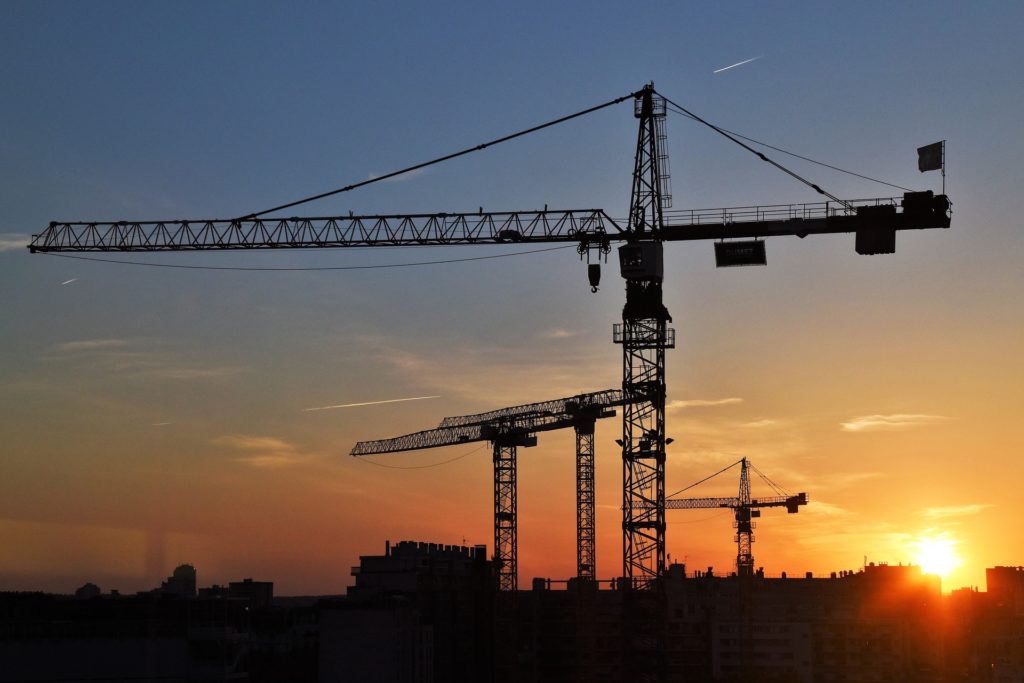No matter the size of the plan you are dealing with, practically all construction projects necessitate some form of lifting, hauling or movement of robust materials. For this reason, as a builder or a contractor, you know that cranes perform a large, significant part in the progress of your project.
However, even the most qualified of builders or contractors can find it overwhelming to recognize which crane is right for the current set of objectives as there are a wide array of cranes on the market — all of which are intended for a distinct purpose or application.

To assist you in this matter, read on for the ultimate guide to choosing the right crane for your building project.
#1. Recognize the Reasons Why the Project Requires a Crane
First things first: In order to be able to choose the right crane for the building project, you need to know why it is necessary for the building project. By recognizing how it will be used, you will be able to narrow down the options more efficiently.
Perhaps this particular project requires a hydraulic crane, a forklift, or a couple of self erecting tower cranes.
Generally, the formula goes, the larger the job at hand, the larger the crane needs to be to get it done.
#2. Understand the Specifics of the Project
Most likely, you are going to rent a crane, although if you do many construction jobs, you may want to look into used cranes for sale.
If you are going to rent the crane, then you can utilize the expertise of the crane rental company to get the appropriate match. All you have to do is explain to them the specifics of the project.
This should entail being prepared to explain to them the weight and size of the load that needs to be lifted, the height of the building where the load will be placed onto, how close or far from the building the crane will sit, the kind of ground condition there is (concrete, grass or dirt), and the type of rigging needed for lifting the items.
This information will help you and the crane rental company ascertain what crane should be used in order to get the job done as efficiently and as safely as possible.
#3. Calculate the Crane’s Capacity Load
One of the most critical pieces of information to take into account is a crane’s “rated capacity load” as this will assist you in concluding what the maximum load capacity is at the height that you would be extending the crane.
After all, you don’t want to start the work and then suddenly realize that the type of crane you have brought to the project isn’t able to manage the weight of the load(s).

#4. Plan how the Cranes Will be Transported
Too many builders or contractors overlook the part of the logistics where the crane gets transported to the work site. This can quickly cause some serious logistic nightmares.
When you are looking at different options of cranes, recognize that they are categorized as either Mobile, Rough Terrain/Crawler or Tower — and all of these require different transportation methods.
For example, when planning out transporting the crane, you must consider whether you need to bypass low capacity or low clearance bridges or roadways that are not robust enough for large loads or trailers.
Furthermore, you want to evade accidents or other traffic issues such as road construction when transporting such a large piece of machinery.
#5. Don’t Forget the Permits
As cranes are large, loud, and obstructive, you generally need a permit to use one, especially if your project is in (or close to) a city. After filling out an application, you will be issued a permit to operate or erect the crane from the city planning office.
If you are opting to work with a high-quality crane rental company, then they should already know the rules in the area, and may even offer to complete the paperwork on your behalf.
How often do you use cranes in your projects? Which ones have you found are the most manageable and efficient to use? Let us know your thoughts in the comments below!
AUTHOR BIO
Hermann Buchberger is the Founder and CEO of Active Crane Hire (ACH). He’s taken the company from start-up to Industry Leader offering the largest fleet of construction cranes in Australia. ACH launched a new type of crane previously unheard of in the Australian market: electric tower cranes. The company’s infrastructure and associated services now comprise a fleet of trucks and trailers, a crane-rigging team, mobile crane technicians, a fleet of service vehicles, and an extensive range of crane spare parts.




